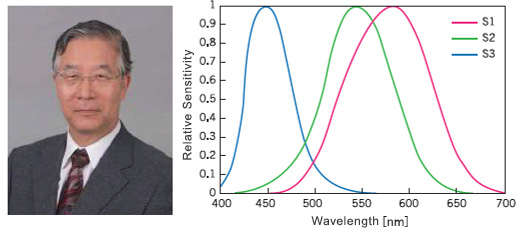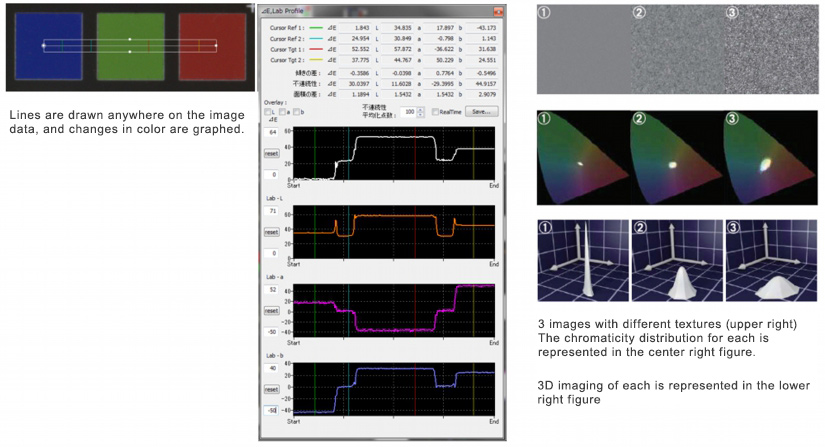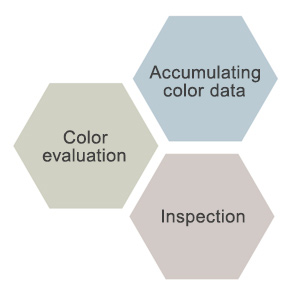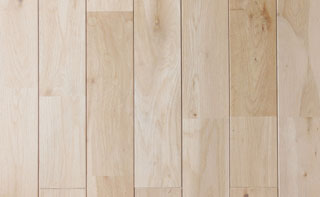PaPaLaB’s Mission ① The Artisan’s Eye
Of the five human senses, the most information is received through the eyes, as this information comprises roughly 90 percent of all information received
Within the manufacturing environment of Japan, where the birthrate is declining and the population is ageing, it is necessary to establish tools that preserve the “artisan’s eye.” By reproducing the human eye, the information sensed by humans can be quantified using information captured by the human eye. Specifically, the mission of PaPaLaB is to visualize the parameters sensed by the brain via the human eye.

Resolving Color Matching Issues in Various Industries and Businesses Simultaneously
PaPaLab’s Mission ② Smart Factories
Color Matching for Various Materials at Various Locations
Due to the recent popularization of eco-friendly cars, the use of dissimilar materials, both for the interior and exterior, has been implemented in order to reduce weight by combining materials that are light and durable. Also, to improve the texture of cars, metallic colors and pearl colors have become commonplace for body colors.
2D colorimeters faithfully input colors exactly as seen by humans, even for metallic or transparent colors, and quantify color data. Even for detailed colors, comparison and matching is possible under a consistent standard without the know-how and experimental rule of a craftsman.
Our 2D colorimeters have already been implemented by major manufacturers for inline paint inspections and have been met with a favorable reception. They are also becoming indispensable as differentiation tools for paint manufacturers who count motorcycle manufacturers, automobile parts manufacturers, and other automobile related industries among their clients.

Uneven Coloring Due to Differences in Materials and Textures Can Be Avoided
What is a 2D colorimeter?
“Faithfully Reproduce and Measure” Colors Exactly as Seen by Humans
PaPaLaB’s “2D Colorimeters” are revolutionary camera-type colorimeters that can faithfully measure all colors that can be seen by humans. By utilizing the “Special Filter” developed through collaborative research between Professor Shimodaira from Shizuoka University and our company, we have achieved colorimetry in two dimensions (a plane), rather than one dimension (a point), which is used traditionally. Through two dimensional colorimetry, it is possible to compare textures and patterns, in addition to colors. It is possible to obtain color information equal to that obtained by a spectrophotometer.
 For PhotographyCompared with the chromaticity histogram distribution obtained by a digital single-lens reflex camera from the same image data, it is clear that it is possible to obtain colors more accurately and from a wider range
For PhotographyCompared with the chromaticity histogram distribution obtained by a digital single-lens reflex camera from the same image data, it is clear that it is possible to obtain colors more accurately and from a wider range

They reproduce the color gamut, exactly as seen by humans, by overlaying 3 images photographed by the S1, S2, and S3 filters,
which are equivalent to photoreceptor cells (cone cells)
Differences from visual inspections, spectrophotometers, and cameras
The Value Lies in “True Colors”
With visual inspections, the physical condition of the inspector can have an impact, and fluctuations in the inspection due to changing inspectors cannot be avoided. Because spectrophotometers look for differences in color under a standard light source, how the colors are viewed will differ when seen under an ordinary fluorescent light. As RGB cameras have a narrow color gamut and do not capture colors accurately, they cannot be used for colorimetry.
Not only can PaPaLaB’s 2D colorimeters quantify accurate color data, they can “accurately view the actual colors from a photographed image.”
| 2D Colorimeters | Visual Observation | Spectrophotometer | Traditional Camera | |
| Precision | ◎ | 〇*1 | ◎ | △ |
| Color Reproduction *2 | ◎ | × | × | △ |
| Stability | ◎ | × | △*3 | 〇 |
| Speed | ◎*4 | 〇 | × | ◎ |
| Texture Measurement |
◎ | ◎ | × | △ |
Differences Between Traditional “Color” Management Methods and PaPaLaB’s 2D Colorimeters
*1 For experienced inspectors
*2 Whether it is possible to save digital data and view it after measurement
*3 Because repeatability of the measurement location is low
*4 Possible to measure 30 frames in 1 second
A New Function Equivalent to the CIE XYZ Color Matching Function
Proposed by the Shizuoka University Shimodaira Research Lab
The “Special Filter” applied to the body of the “Full Color Gamut Vision Camera*” has completely different characteristics from traditional RGB cameras.
By implementing a “function (graph) that is exceedingly close to the sensitivity of the human eye,” which is equivalent to the “CIE XYZ color matching function” developed at Shizuoka University, this filter faithfully reproduces the “sensitivity of the human eye” and photographs colors accurately. Utilizing this technology, our company productized the world’s first 2D colorimeter that accurately analyzes color data through use of the S1, S2, and S3 filters.
*The “Full Color Gamut Vision Camera” was first developed by the Shizuoka University Shimodaira Research Lab and serves as the basis of PaPaLaB’s 2D colorimeters.

Yoshifumi Shimodaira, a specially-appointed Professor at the Shizuoka University Organization for Innovation and Social Collaboration (upper left). Illustrating the spectral sensitivity of the ‘filter equivalent to the XYZ color matching function’ implemented on the camera developed at Shizuoka University (upper right)
3 benefits of the 2D colorimeter
1 Overwhelmingly Fast Speed
Because our 2D colorimeters are of a camera type, compared to traditional scanner type inspection devices, the speed from the time of photography to measurement to display of results is dramatically enhanced. In addition, as photography can be done without any contact, all objects are compatible.
Still images can be measured in roughly 1 second, and videos can be measured in real-time.
Also, measurement results can be inspected through both numerical values and images.
2 Comparison of Complex and Detailed Patterns and Textures
In addition to complex and detailed colors and patterns, subtle textures, such as metallicity, sheen, and transparency, can also be compared.
Utilizing the benefit of two dimensions, lines are set up on the image data, and color changes within the lines are instantly graphed.
Also, “color distribution coincidence,” PaPaLaB’s unique evaluation method, has been implemented. Through color distribution coincidence, differences in how colors are viewed due to differences in metallicity, which are difficult to compare with traditional measurement methods, can be compared. (At PaPaLab, colors are approached from both the average ⊿E and color distribution coincidence.)

3 Quantification of Data Without Relying on Experience and Instinct
 Because color data that have been photographed by a 2D colorimeter can be saved, they can be utilized for accumulating color data in a database or to realize traceability of inspections. They can be accessed from anywhere at any time and can be sent to remote locations through the internet.
Because color data that have been photographed by a 2D colorimeter can be saved, they can be utilized for accumulating color data in a database or to realize traceability of inspections. They can be accessed from anywhere at any time and can be sent to remote locations through the internet.
・Traceability ・Remote medical diagnostics
・Remote witness inspection ・Faithful digital color samples
Therefore, even if inspectors do not have skills or experience, they can perform inspections and color matching remotely using quantitative numerical data and functional image data. We expect application and utilization in various industries in the future.











